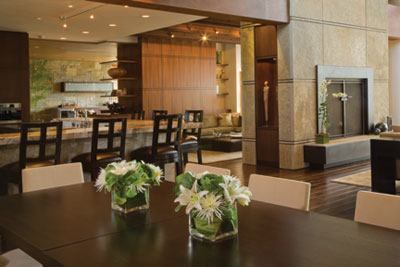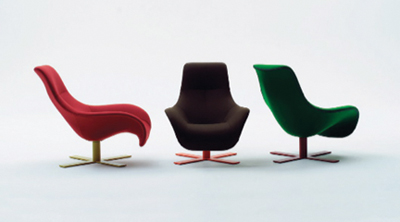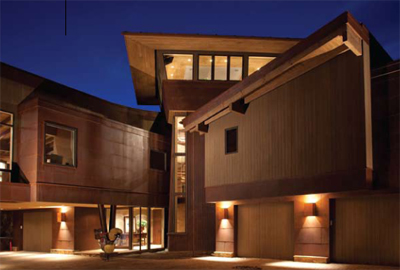Collisions and mountains aren’t strangers. Mountain ranges form as great plates of land collide, yield and uplift. Swirling clouds collide with the mountains and weather brings the sculpting forces of wind, snow, rain, and water. In the design community, modern architecture and contemporary interior design are in a collision course with the mountain lifestyle and traditional mountain building practices, birthing the new design movement of Mountain Modern. “Architecture is the will of an epoch translated into space,” asserted Ludwig Mies van der Rohe, a pioneering master of modern architecture along with Walter Gropius and Le Corbusier. Modernism emerged at the beginning of the century with influences from Art Nouveau, the early work of Frank Lloyd Wright, and industrial design, according to architectural historian,Spiro Kostov. Drivers were new materialism, standardization, prefabrication and an available material palette of concrete, steel and glass thanks to preceding industrial advances. Philosophically, the modernist movement pursued freedom from the past, similar to the political movements in Europe immediately after the First World War. The new emphasis was on function, honest expression of structure and materials, and a rational approach to design. This included suppressing all ornamentation and historic allusions and style. In keeping, the forced symmetry of classical architecture was abandoned in favor of balanced asymmetry. The pioneers of modernism adopted a fitness of purpose expressed in a desire to simplify and eliminate the superfluous. Less is more became a repeated saying of Mies van der Rohe.
As exemplified by the International Style, modern urban architecture turned inward. The buildings were anchored to the site, but did not extend to define the spaces around them or to create interaction with the streetscapes. While designers aimed at efficiencies in places to live and work, the buildings did not connect with their inhabitants emotionally or by tradition. Mies van der Rohe reported he searched and distilled until he reached an architecture that said “almost nothing.” As with most movements, modernism continued to evolve as new designers pressed it forward in fresh directions and some of the early practitioners extended their thinking. The U.S. also honed its own version of modernism after World War II. Especially in California, modern residential architecture became more conscious of the sites as rooms articulated to terraces and patios for outdoor living, and some architects began to specify outdoor spaces and landscaping. While there have been other important subsequent architectural trends and movements, a minority of practitioners have continued undeterred in the modernist tradition. However, in the last decade, there has been a considerable resurgence of public interest in mid-century modernism and the current modernists’ work. Until this time, mountain architecture and interior design has largely followed in the traditions of climate-tested designs like cabins, lodges, and chalets that use the abundant local materials of stone, logs and timber. These are designs that are immersed in custom and tied to comfort. Now, mountain meets modern. It is an exciting time for new creations using the modern materials of concrete, glass and steel juxtaposed with traditional mountain timber and stone. The simplicity of the finishes and interiors draw the occupants’ eyes to the outdoors where windows function like a room’s art. It is fresh, new, daring design filled with individual innovations and creativity from the talented architects, designers, and builders of the area, complemented by the artwork. Let’s see their works and what they are saying about the collision as mountain meets modern. ~ Story By Ann Zimmerman
|
[bannergarden id=”1″] | |
| [bannergarden id=”2″] | ||
| [bannergarden id=”3″] |



